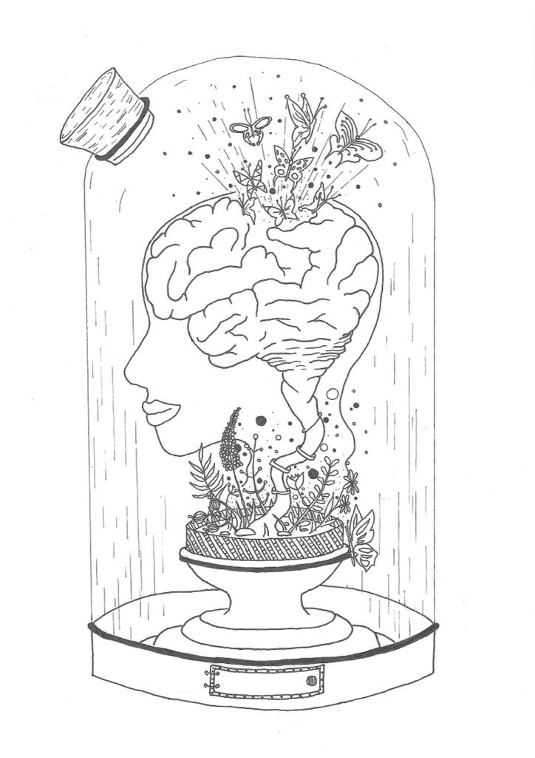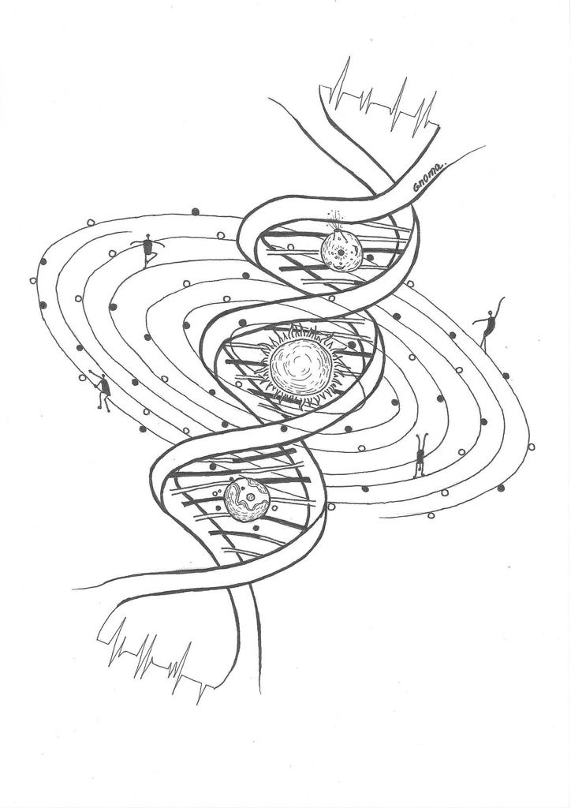Gene-environment correlation
Gene-environment correlation
Research shows that our genes do not just influence our mental health and wellbeing, but also our experiences of the environment (such as smoking or the amount of social support we receive from friends and family). In other words, genes are often related to environmental influences. This is called gene-environment correlation and has been observed in relation to the genetic factors underlying mental health problems.
Until recently, most of the evidence for gene-environment correlation has been based on twin studies. These studies tend to estimate genetic factors statistically in related individuals rather than analysing actual genes. We now investigated gene-environment correlation in unrelated individuals and using genetic data aggregated across the whole genome. Such genetic measures are called polygenic risk scores.
Schizophrenia and Major Depressive disorder
Schizophrenia and major depression are both mental illnesses. People with schizophrenia often have trouble thinking clearly and may see or hear things which are not real. People with major depression often feel extremely sad and do not experience pleasure even when engaging in things they used to enjoy. Although both of these disorders appear to be different, there is some genetic similarity between them.
Our study aims
We explored whether the genes that have been linked to schizophrenia and major depression are correlated with positive or negative behaviours and environmental experiences. We used data from three large British community studies with participants from the general population reporting on their experiences throughout their lives.
Studying the relationship between genes and environments helps us understand how genes influence our mental health and wellbeing through associated experiences and environmental influences. This may uncover new targets for the psychological and behavioural treatment or prevention of mental health problems.
Study 1. Polygenic Scores for Schizophrenia and Major Depression are associated with Psychosocial Risk Factors in Children: Evidence of Gene-Environment Correlation
Our study in children showed that gene-environment correlations were more common for major depression and less common for schizophrenia. For instance, an increased polygenic risk for schizophrenia in children was correlated with single parenthood only, whereas the offspring’s genetic liability for depression was associated with several indicators of low socioeconomic status, lack of father’s involvement in childcare and parental lack of interest in the child’s education. Most of the detected gene-environment correlations represent ‘passive’ gene-environment correlations, which means these associations are explained by the fact that parents pass their genes on to their children whilst also shaping the environment in which the children grow up.
Study 2. Polygenic risk scores for schizophrenia and major depression are associated with socio-economic indicators of adversity in two British community samples
Results from Study 2 showed that schizophrenia and major depression were associated with common environmental risk factors in adults through gene-environment correlation. Specifically, major depression was associated with several indicators of lower socio-economic status. Overall, our findings suggest that gene-environment correlations may play a bigger role in the development of major depression compared to schizophrenia in adulthood possibly through ‘active’ gene-environment correlation whereby individuals select themselves into adverse environments based on their own genetic liability.
Study 3. Gene–Environment Correlation over Time: A Longitudinal Analysis of Polygenic Risk Scores for Schizophrenia and Major Depression in Three British Cohorts Studies
Research suggests that gene-environment correlations get stronger over time as individuals become more able to actively select their own environments according to their preferences. We investigated whether gene-environment correlations changed over time across childhood and adulthood. Overall, the majority of gene-environment correlations remained stable across the different development periods, except for one marker of low socioeconomic status in childhood and one indicator of urbanisation in adulthood for schizophrenia, as well as two markers of low socioeconomic status for depression in adulthood. Finally, when investigating gene-environment correlations across the life course, our study showed that the association of the genetic risk for both disorders and socioeconomic status increased over time.
Points to consider
We used a method called ‘polygenic risk scoring’ to assess whether a person’s measured genetic risk for either schizophrenia or major depression is associated with a particular environment.
It is important to point out that having a high polygenic score for either schizophrenia or major depression is in no way deterministic but reflects a (relatively small) probability for the development of these mental health problems. The polygenic risk scoring approach can currently only be applied at a group level to study genetic influences within a large sample but cannot be used to determine an individual’s mental health.
Secondly, environmental factors, such as indicators of socio-economic status, are influenced by many different factors, both genetic and non-genetic. Our studies did not seek to fully explain the experience or effects of these environments. Our research only shows that some of the genetic risk for schizophrenia and major depression is associated with them.
Further information:
- What is gene-environment correlation?
- What is a single nucleotide polymorphism
- What is a polygenic risk score?
- What are genome-wide association studies?
- What is Schizophrenia?
- What is Major Depression?
- More information about the Social Science Genetic Association Consortium
References
Machlitt-Northen S, Keers R, Munroe PB, Howard DM, Trubetskoy V, Pluess M. Polygenic scores for schizophrenia and major depression are associated with psychosocial risk factors in children: evidence of gene-environment correlation. J Child Psychol Psychiatry. 2022 Jul 4. doi: 10.1111/jcpp.13657. Epub ahead of print. PMID: 35781881.
Machlitt-Northen, S., Keers, R., Munroe, P. B., Howard, D. M., & Pluess, M. (2022). Polygenic risk scores for schizophrenia and major depression are associated with socio-economic indicators of adversity in two British community samples. Translational Psychiatry, 12(1), 477. https://doi.org/10.1038/s41398-022-02247-8
Machlitt-Northen, S.; Keers, R.; Munroe, P.B.; Howard, D.M.; Pluess, M. Gene–Environment Correlation over Time: A Longitudinal Analysis of Polygenic Risk Scores for Schizophrenia and Major Depression in Three British Cohorts Studies. Genes 2022, 13, 1136. https://doi.org/10.3390/genes13071136

